Architects’ Showcase: Hassell puts health first with new University of Edinburgh building
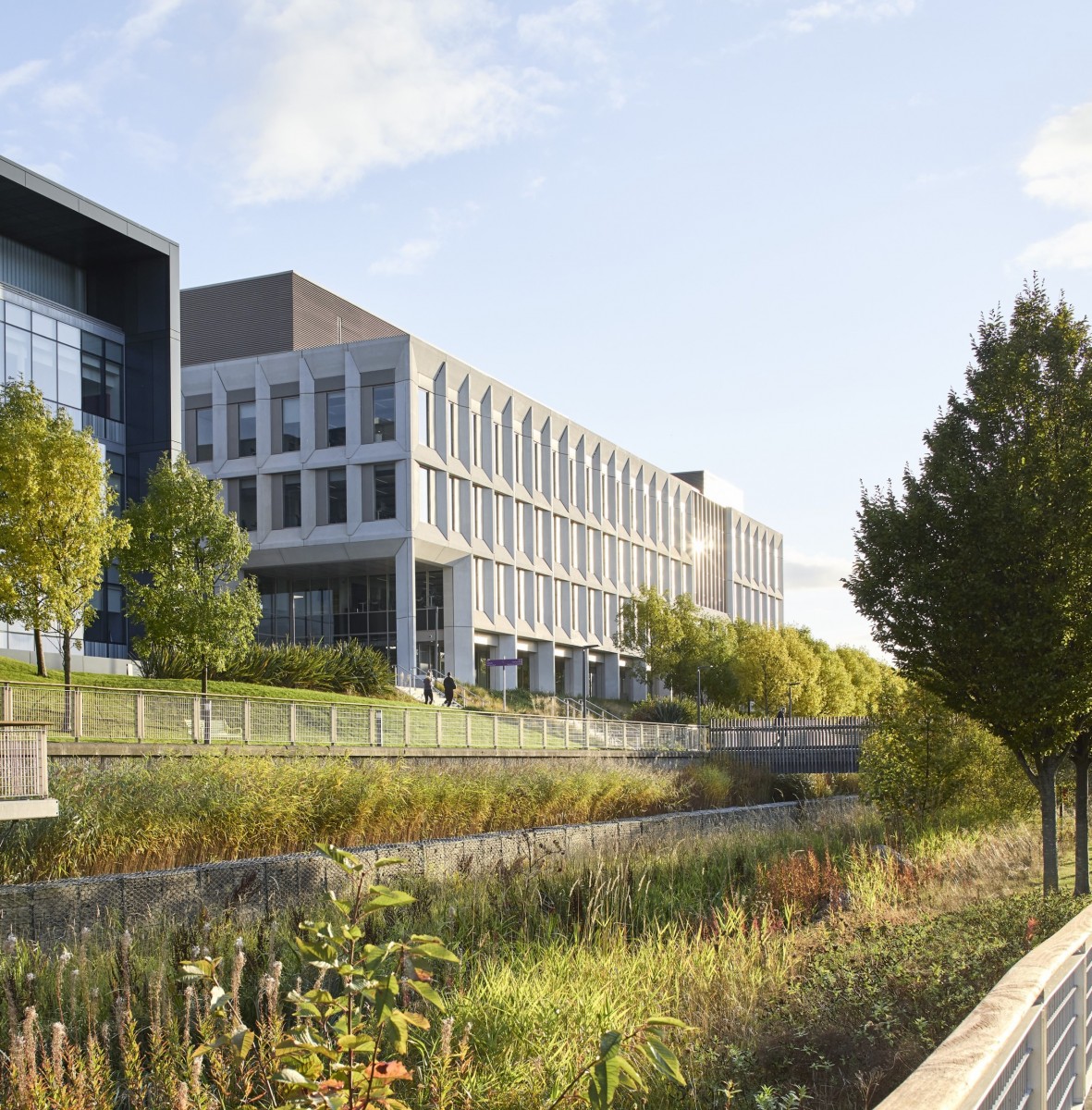
Construction work on a new building for The University of Edinburgh at the growing health innovation district of Edinburgh BioQuarter, housing the world-class Usher Institute and partners, is now complete.
Designed by international design studio Hassell, with construction by McLaughlin & Harvey, the new building will welcome researchers, students, healthcare providers and partners focused on transforming health in society by working with people, populations and data.
Funded as part of the Edinburgh and South East Scotland City Region Deal, with additional generous support from the Wolfson Foundation, the Usher Building is home to the Usher Institute — one of six innovation hubs that bring together researchers and industry to delve into some of the world’s most pressing challenges. The institute works with people, populations, and data to innovate in health and social care.
With mental and physical wellbeing central to the design, healthy workplace choices are prominent throughout the building. From open staircases encouraging active movement to double-height recreational spaces designed to bring in outdoor greenery, the design recognises the changing needs of professionals and supports post-pandemic agile ways of working.
A major addition to the Edinburgh BioQuarter
The world-class research, workplace and post-graduate teaching hub will accelerate collaboration and innovation within population health sciences, serving both the Usher Institute’s academic research centres through state-of-the-art facilities and strengthening collaboration with its public, private and third-sector partners.
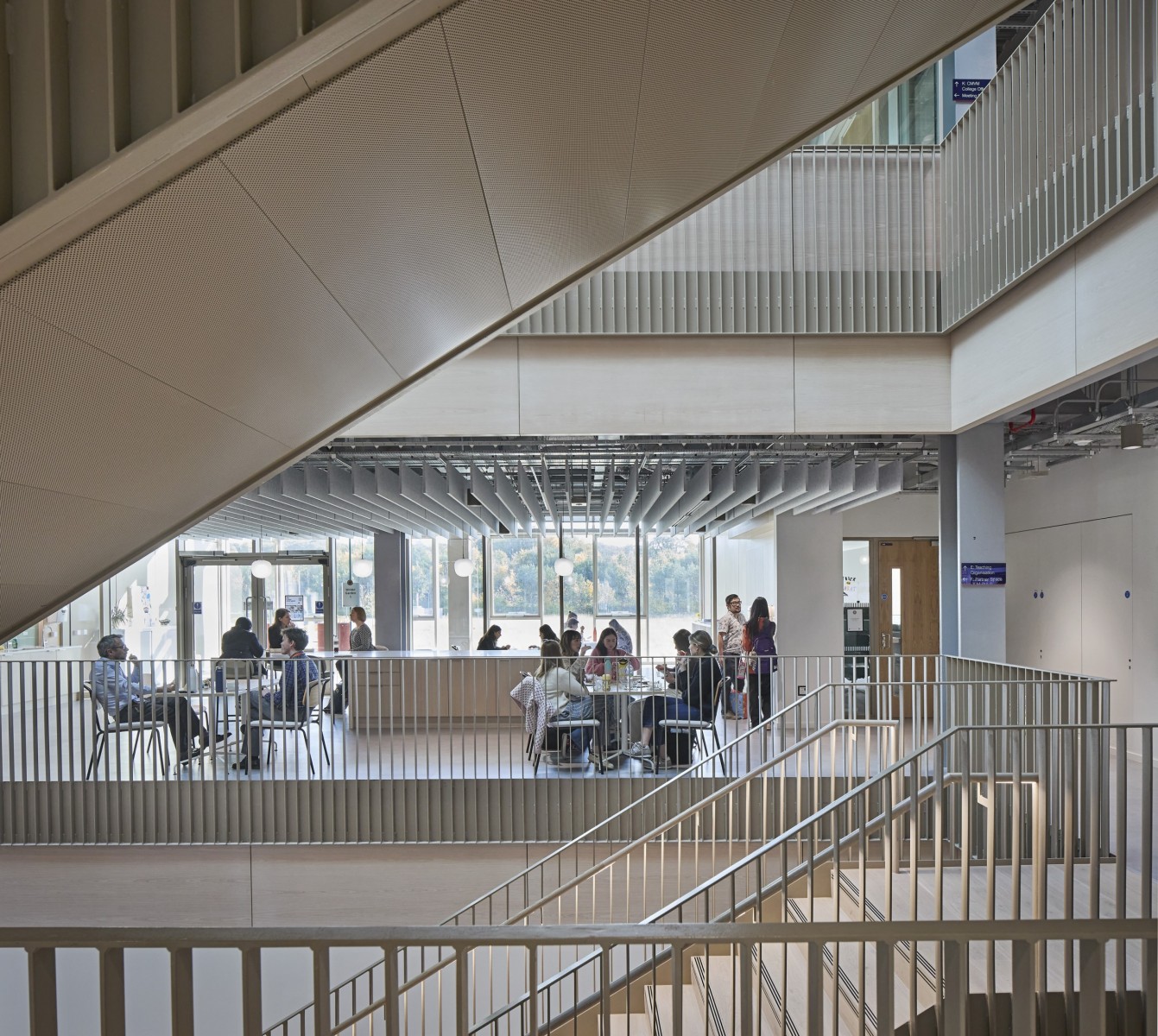
Building on existing expertise and interdisciplinary research, the four-storey building will accelerate new public, private and third-sector partnerships to discover, develop and deploy data-driven solutions to address today’s most pressing health and social care issues. At the heart of the Edinburgh BioQuarter, the building will bring together over 900 students, researchers, providers, and industry partners to join a growing health innovation ecosystem across South East Scotland.
The Usher Building provides numerous opportunities for natural interaction and aims to cultivate community across disciplines. Fundamental to the design brief, a number of workspaces, recreational areas, and flexible zones are on offer for students, staff, professional partners, and visitors to connect and collaborate. Throughout the design process, Hassell consulted researchers from across the medical field, working with the Usher Institute via focus groups, open days, and direct engagement to ensure that the people using the building were shaping its design.
Creating a striking identity for The University of Edinburgh, the building design sensitively considers the city and the University’s rich history through a solid, civic and characterful façade that acknowledges the site’s proximity to Edinburgh’s historic centre. The original Usher Institute building in the city centre, completed in 1902, was gifted to the University alongside the first Chair of Public Health in the world - with an endowment from Sir John Usher, Baronet of Norton and Wells. This new building addresses the contemporary needs of its users by designing a space for those working and studying in health sciences that puts their physical and mental wellbeing first.
The Usher Building brings additional benefits to the local community, acting as a dedicated open space for connections, offering support and inspiration for STEM in the region, and contributing to life-long learning and employment at the university. Delivered via the Scape Scotland framework, 40% of local labour was procured within 20 miles and 56% of all project spend was within 20 miles of the site. Through the YouMatter Communities Fund, 41 organisations received donations totalling £14,611. Creating employment and learning opportunities, the project supported 78 apprentices for a duration of 2,403 weeks.
The development of the state-of-the-art research and teaching building began in 2018, and the construction of the project was completed in 2024.
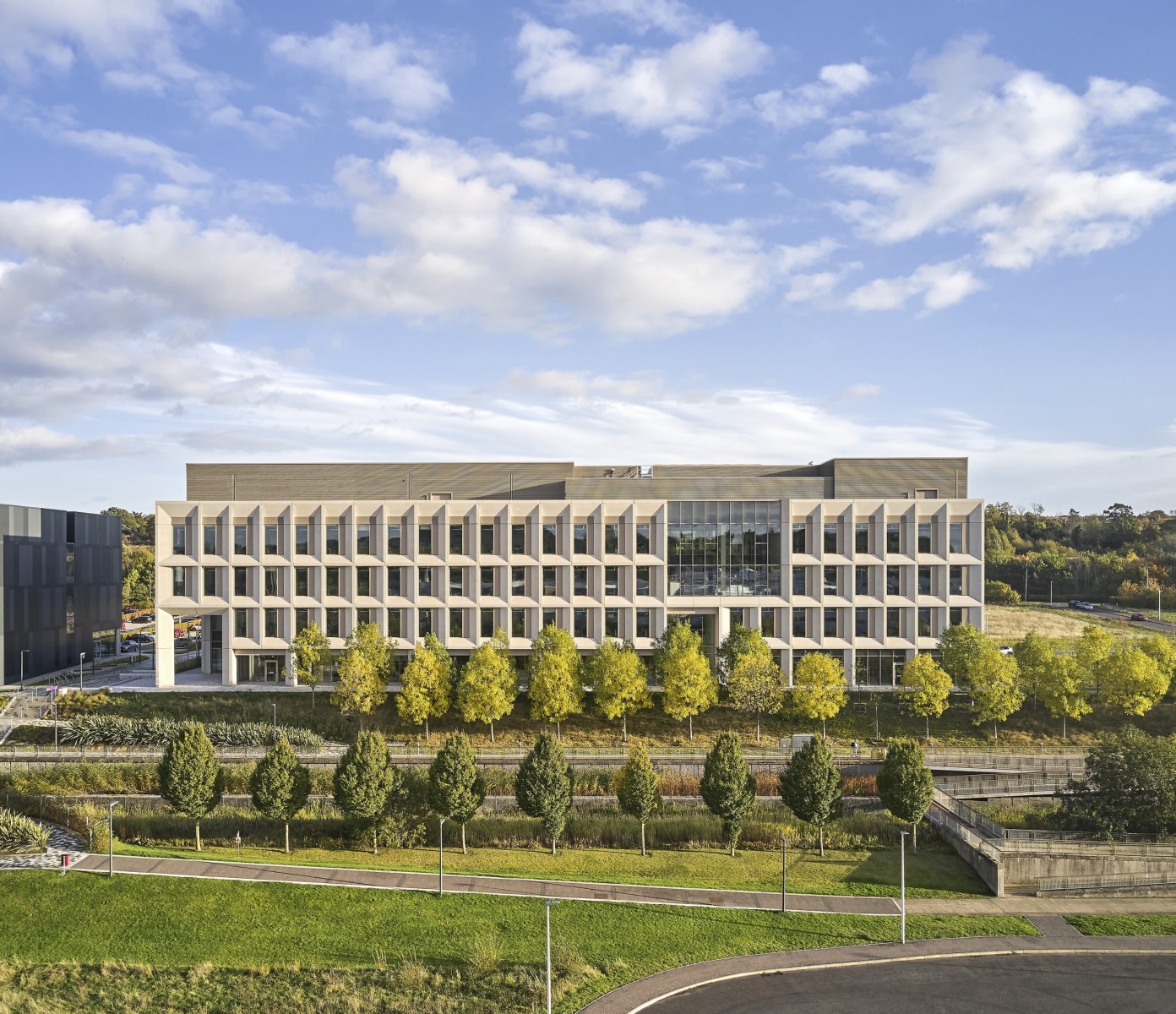
Will Hartzog, senior associate at Hassell, said: “The Usher Building provides welcoming spaces where wellbeing takes centre stage — both for the mind and body. It came to life through the efforts of a team that didn’t just design a space but crafted an experience. Working closely with experts from diverse fields, including the invaluable insights of the Usher Institute staff, we’ve created something that truly serves its people. Every corner, from informal gathering spots to dedicated meeting rooms, invites connection and sparks collaboration. It’s a space that breaks down the usual barriers, giving way to a research community that feels more connected, engaged, and accessible to all.”
Steve Irvine, operations director at McLaughlin & Harvey, said: “Continuing our relationship with The University of Edinburgh, through the SCAPE Scotland framework, we are delighted to have successfully delivered the Usher Building, a world-class centre for health and social care research. The contribution of our project team extended beyond the design and build to optimise the utilisation of local labour and support community organisations throughout project delivery. Collaboration with the client and our supply chain has resulted in this excellent addition to the Edinburgh BioQuarter.”
Site
The building provides world-leading facilities for the Usher Institute from its site in Edinburgh BioQuarter in the city’s south-east. Home to an institute for interdisciplinary teaching and research with global impact, the four-storey building has a gross internal area of 11,100 sqm and features research and working areas, collaboration zones, a clinical trials unit, a sound studio, bespoke ‘wellbeing’ spaces and numerous ground-floor amenities, which are also for public use.
A series of interconnected open and enclosed public spaces on the building’s ground floor supports the building’s outward focus to welcome in the public and foster community relationships, working with local schools and businesses to showcase the driving forces behind health and social care. This will be partially fulfilled through the ground-floor event hall, which has a capacity of 170 people and can be used for conferences, teaching, and community engagement.
Approach
The building hosts two public entries to welcome university staff, partners, visitors and the public. The primary entrance on the north corner features a dramatic double-height entry while also providing a direct connection to the Royal Infirmary of Edinburgh, emphasising the hospital’s relationship to the Usher Institute. Being a building at the ‘heart’ of the BioQuarter, the two entries on the ground floor support the building’s open and connected spaces, approachable from multiple directions.
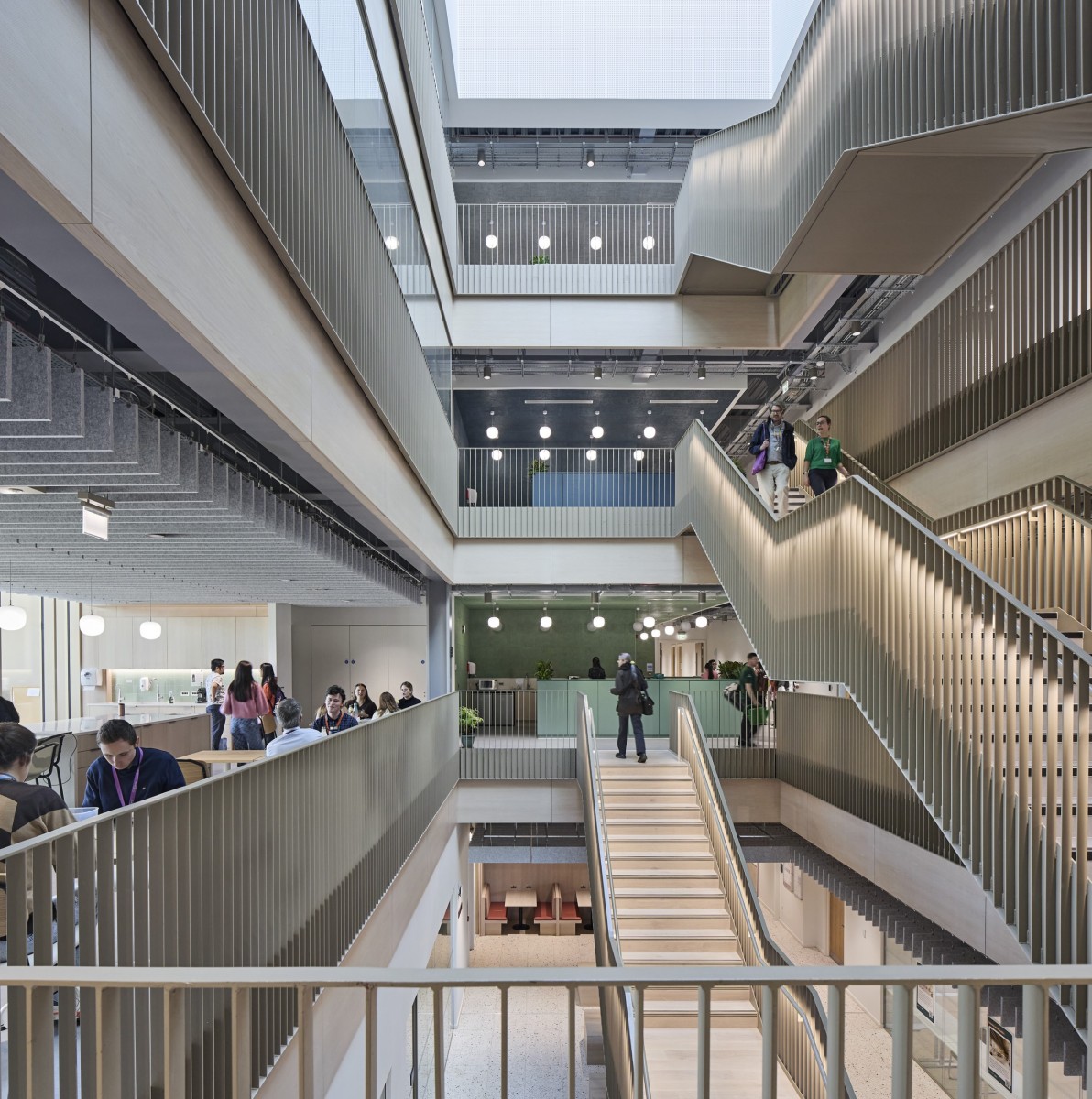
Building form
The materiality of the building serves to reinforce its civic nature, offering a sense of permanence and solidity that invokes Edinburgh’s historic architecture that is achieved with the strategic use of modern materials, such as glass reinforced concrete (GRC). Central to the design are initiatives that prioritise health-focused ways of working, from incorporating natural light into all building areas through light wells, to access to fresh air in most open-plan areas that allow occupants individual control of their immediate
environment.
Large windows speak to the institute’s collective nature, encouraging collaboration across zones and bringing users together in a post-COVID environment. They also offer far-reaching views from each desk, including Craigmillar Castle.
Façade
It was important from the design brief that the Usher Building feel timelessly situated within the rich heritage of the University of Edinburgh, visually connected to the city’s historic castles, while achieving a contemporary outlook that demonstrates the innovation of its inner team. This is accomplished by the simple, repetitive arrangement of its solid façade – made from GRC – which ensures the building acts as a recognizable identity for the university.
Hassell chose GRC as the principal cladding material. Incorporating lightweight cladding rather than precast solid panels allows varied geometrical arrangements, which create a
sense of depth and structural economy without blocking viewpoints.
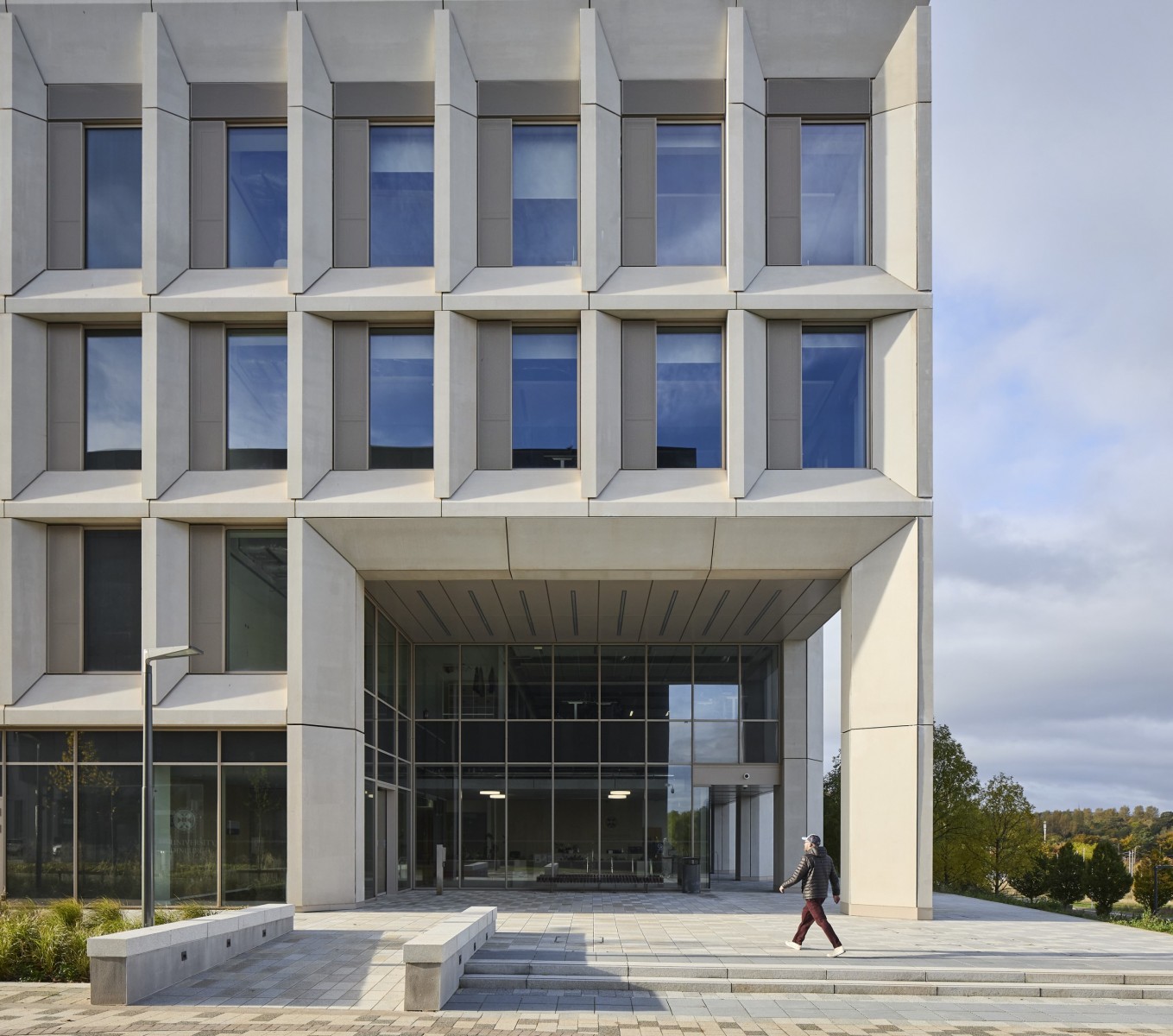
Internal layout
Hassell’s design for the Usher Building began with an internal layout focused on creating a dynamic, collegiate environment. The building offers numerous opportunities for academic and commercial research, including partnerships with new Scottish enterprises, fostering collaboration and knowledge sharing. It features a variety of workspaces, communal zones, cafes, project rooms and presentation areas. Flexible event spaces, seminar rooms, and meeting rooms are available for all occupants, promoting mobility and interaction.
The final design prioritises physical and mental health, featuring open staircases in natural lightwells, healthy cafe options, ample cycle parking and shower facilities, and tea points to encourage casual encounters. Notably, wellbeing spaces with controlled indoor-outdoor areas have been designed to both host larger elements of greenery and be used
year-round. The spaces can be used actively for yoga or table tennis, and quiet contemplation, such as a library or herb garden.
Designed with post-pandemic lifestyles in mind, the building accommodates 900 people and encompasses agile working principles. At its core, it promotes innovation, collaboration, and the changing needs of current and future occupants























